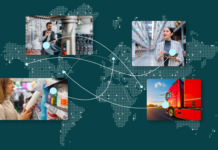Among all sectors affected by the COVID-19 pandemic, healthcare was arguably the industry most urgently forced to rapidly utilise all available technological advancements. From frontline workers to back-end administrators, the industry had to adapt very quickly to changing circumstances. It had to fight a two-front battle: ensuring that its assistance to patients ran uninterrupted, and guaranteeing IT and service delivery internally as remote work and social distancing went into hard-compliance mode.
The silver lining was that it ended up being the perfect time in pushing for digitisation efforts in the healthcare environment.
The software side
In a panel session at Jicara Media’s recently conducted Healthcare Frontiers 2020 Conference, Karen Chong, Country Manager for Singapore at ServiceNow, noted that digitisation effort is needed now especially with the increased volume of critical cases that strains the workforce and clinical resources of hospitals.
The creation of a ‘single platform of platforms’ to connect other systems like electronic health records and electronic medical records into one seamless system is seen to be the key in making hospitals more efficient.
“Nowadays, we expect healthcare organizations to take a hyper-personalised approach in addressing our needs and provide them with very deep data driven insights about the patient,” she explained.
“Towards the integration of operational systems: we know that hospitals have a lot of complex systems where critical data resides and you need decision support in those areas. (There is also an) increased volume of patient requests for information and guidance and these actually (involve) all personnel in a sense,” she said.
She also sees that the driving forces for hospitals to accelerate digitisation include the ability to offer modern forms of engagement with patients, as well as better communications between clinicians and staff while keeping the privacy of involved information secure.
Despite all the innovations and improvements that are expected to come with digitisation, Chong admitted that its efficiency will only succeed if all participants of the chain are receptive to change.
“Technology can really do a lot of things and we are there to help bring down all the complexities and simplify the user experience. Driving the adoption can be actually hard when the workforce itself is resistant to change or can’t find that champion who wants to take the ownership to change it,” she stated.
The hardware side
Marcelo Ang, Associate Professor in the Mechanical Engineering Department at the National University of Singapore, believes that considering the application of robots in the field of healthcare is essential, especially with the ongoing pandemic.
“It will help both the patient and the person delivering the healthcare service minimise contact, reducing the possibility of infection. That is one clear benefit. It would be nice if robots can do swabbing as well,” he explained.
Ang foresees that application of robots in hospitals would be driven by the need to make the jobs of healthcare professionals more fulfilling. By taking away from them mundane duties such as manual recording of data and delivery of patients’ requests for supplies, healthcare providers can reduce menial tasks and focus on clinically important goals.
“How can technology help nurses? I would estimate that 60 percent of the time, they don’t do nursing functions and one of the hardest things they do is recording data — can all this be automatically captured in a log and be transcribed, so at the end of the shift it will be summarised and the nurse will only need to do a small amount of editing?” he asked.
Ang said that such things are closer to reality, citing the case of Haidilao Hotpot in Marina Square in Singapore that employs robot waiters. These robots can also be programmed for hospitals to deliver food and other supplies to patients. Ang believes that the use of robotics will further be widespread sooner as its cost gets cheaper over time due to mass production and the ‘democratisation’ of technology. Free machine learning models and programs available on the Internet such as Teachable Machine add significantly to the richness of what is possible using artificial intelligence and robotics.
He also mentioned that the rise of shared services economy will be a big help in mainstreaming the use of robots in hospitals. It will allow the use of the technology through a leasing model that takes the burden of maintaining the machines away from the healthcare facility.
Dinesh S.R., Vice President and Business Unit Leader for Transformational Health at Frost & Sullivan noted that because of the pandemic situation, some hospitals have adopted the use of low-cost technologies like voice assistants and voice enabled devices and connected them with intelligent systems.
“Even if I am allowed to return to the university, I will now take advantage of facilities I didn’t use before like video conferencing and screen sharing. The same can happen in the healthcare environment,” Ang shared. “The current COVID-19 situation showed us the importance of digital delivery. Post-COVID-19, this digital delivery will continue to grow but will be enhanced more with physical presence.”
















